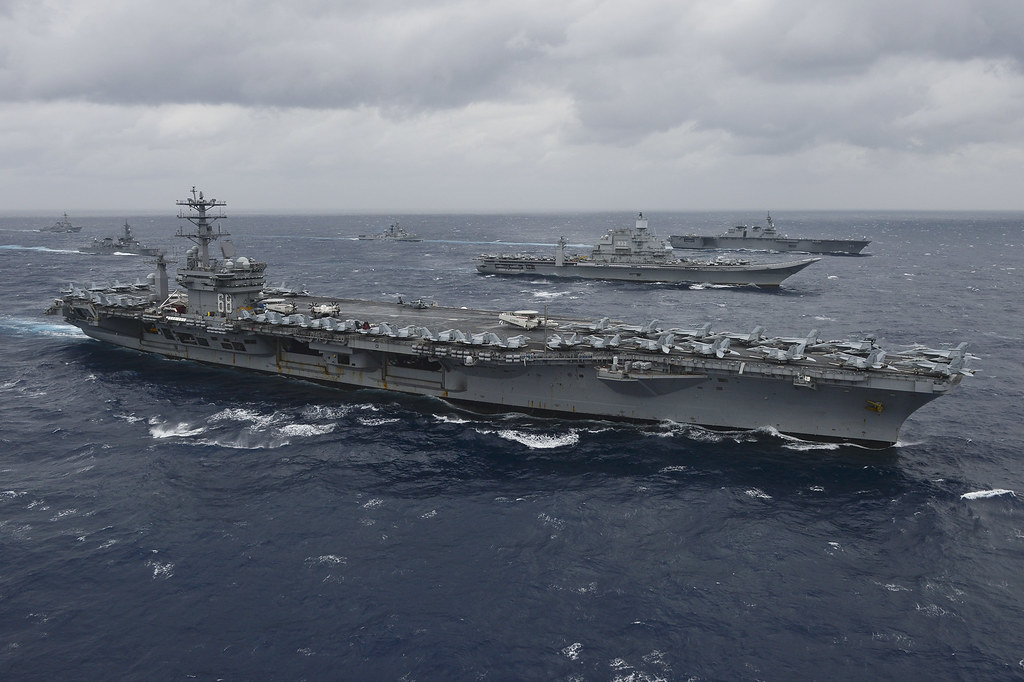By MC3 Weston A. Mohr, USS Nimitz Public Affairs
Ships from the Indian Navy, Japan Maritime Self-Defense Force and U.S. Navy sail in formation as part of exercise Malabar. (U.S. Navy/MC3 Cole Schroeder) >>
BAY OF BENGAL - Maritime forces from India, Japan, and the United States completed Exercise Malabar 2017, July 17, in the Bay of Bengal.
The exercise was designed to advance military-to-military coordination and capacity to plan and execute tactical operations in a multinational environment.
Exercise Malabar began in 1992 and this year marks the 21st rendition of the exercise. The objectives of Malabar 2017 were to improve interoperability between the U.S., Indian and Japanese maritime forces, provide an opportunity to conduct engagements with India and Japan, and demonstrate U.S. naval presence in the Indo-Asia-Pacific region.
"Exercise Malabar is a great symbol of friendship between India, the United States and Japan," said Indian Navy Rear Adm. Biswajit Dasgupta, flag officer commanding Eastern Fleet. "Malabar is one of the main elements in our defense partnership, and it conveys a message that the three countries are willing to work together closely in the maritime arena."
Events during the at-sea portion included professional exchanges and embarks, a photo exercise, submarine familiarization, defense exercises, medical evacuation drills, surface warfare exercises, communications exercises, search and rescue exercises, helicopter cross-deck evolutions, underway replenishments, gunnery exercises, and anti-submarine warfare.
"Exercise Malabar ensures that we can operate with our partners in this region of the world as seamlessly as possible," said U.S. Navy Capt. Robert Westendorff, commander, Carrier Air Wing 11. "The main way it improves our capabilities is that we can all operate together."
Westendorff said that practicing operations as a cohesive unit will help with understanding common terms between the maritime forces in case they have to work together in the future.
"What it says to the world is that we operate as a coalition with friendly nations across the world in a partnership-building relationship so that if any contingency operation should arise in this region, the United States Navy can operate freely with our partners, working as one unit and one team," said Westendorff.
Participants in Malabar from the U.S. Navy included the Nimitz Carrier Strike Group, which consists of USS Nimitz (CVN 68), the Ticonderoga-class guided-missile cruiser USS Princeton (CG 59), Carrier Air Wing (CVW) 11, CSG 11 staff and Destroyer Squadron (DESRON) 9. The deployed units from DESRON 9 include the Arleigh Burke-class guided-missile destroyers USS Howard (DDG 83), USS Shoup (DDG 86), USS Pinckney (DDG 91) and USS Kidd (DDG 100).
The U.S. Navy has patrolled the Indo-Asia Pacific routinely for more than 70 years promoting regional peace and security.

